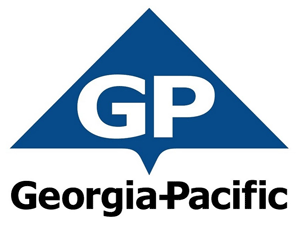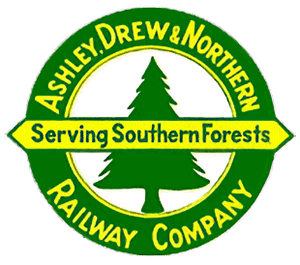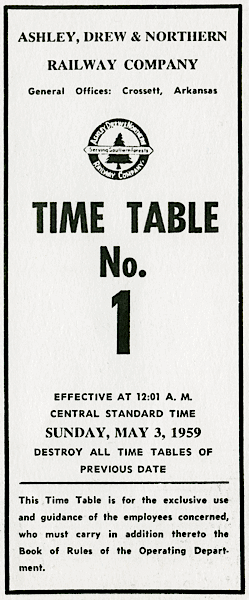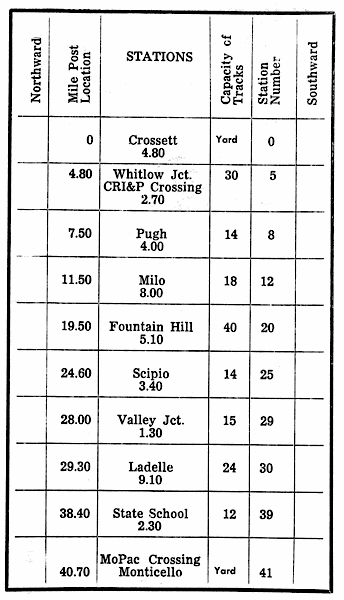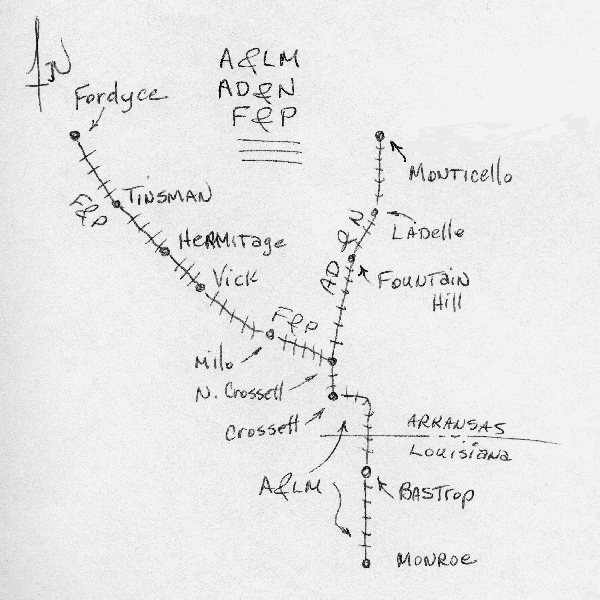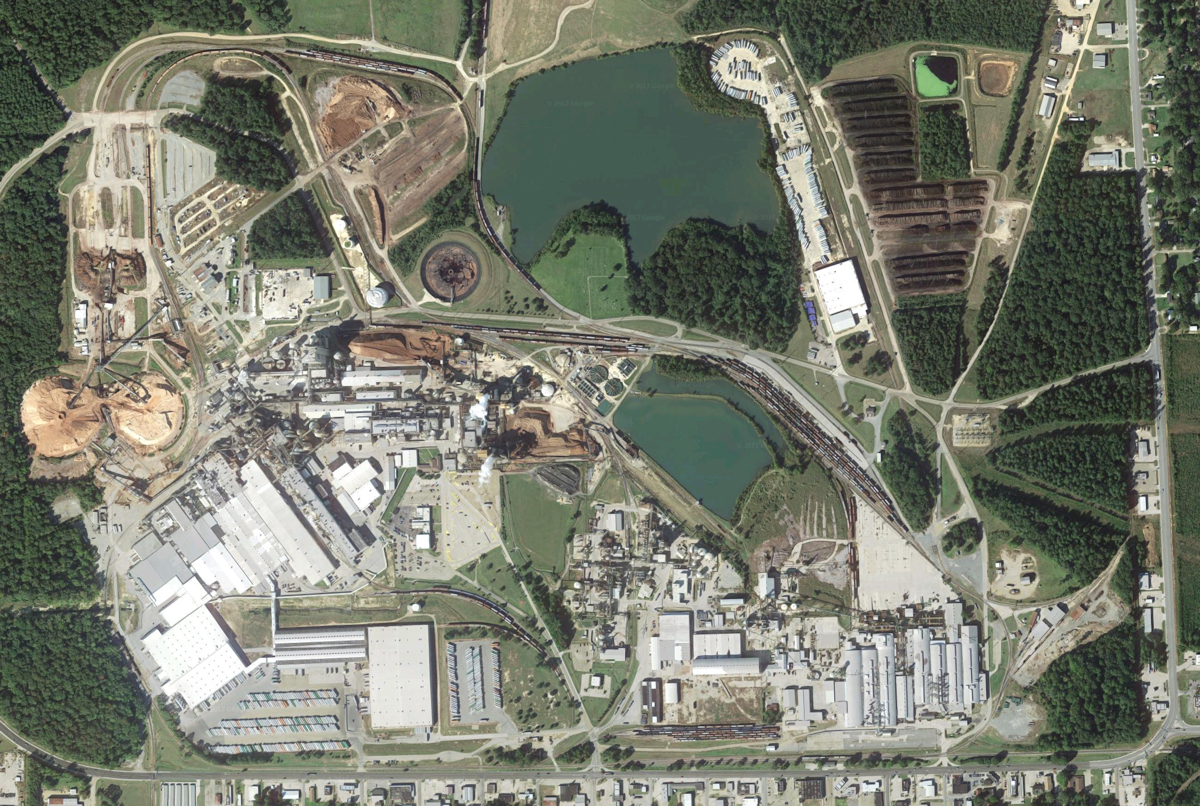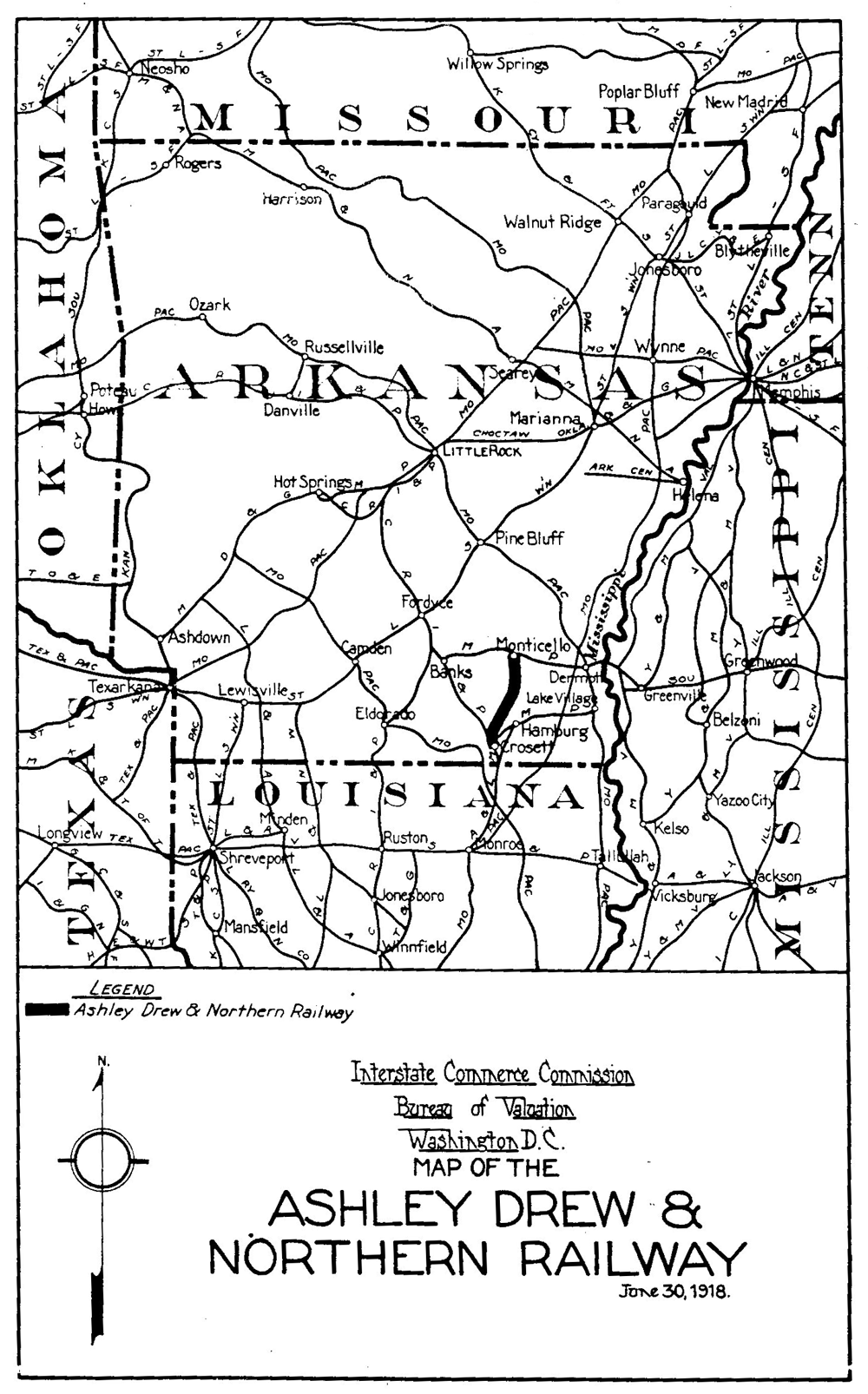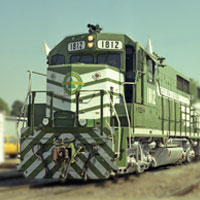









Ashley, Drew & Northern
"Serving Southern Forests" in Tedder Green
Named for the southeastern Arkansas counties it served for 84 years, the Ashley, Drew & Northern Railway began life in 1912 and for the next two decades the pike hauled logs and lumber for the area's thriving logging industry. The town of Crossett was from the beginning the fundamental industrial hub for the shortline, bringing increased online traffic from a long series of new industries after 1950. The busy shortline kept pace by dieselizing with an interesting stable of locomotives over the years.

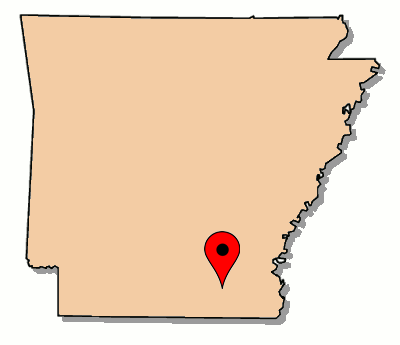 The Ashley, Drew & Northern Railway began life in 1912 with the purchase of the 10 mile Crossett, Monticello & Northern. After the sale, the line to Monticello was finished in 1913 and for the next two decades the AD&N hauled logs and lumber for the area's logging industry. The town of Crossett was from the beginning the fundamental industrial hub for the shortline, bringing increased online traffic from a long series of new industries: from the beginning the Crossett Lumber Co., Crossett Chemical Co. in 1934, a large paper mill in 1936, the Chase Paper Bag Co. in 1945, and Crossett Concrete Products, Simplex Paper Corp., Bemis Brothers Bag Co. and the Textile Paper Products Co. -- all developed after 1950. The busy shortline kept pace by dieselizing with General Electric 70 tonners.
The Ashley, Drew & Northern Railway began life in 1912 with the purchase of the 10 mile Crossett, Monticello & Northern. After the sale, the line to Monticello was finished in 1913 and for the next two decades the AD&N hauled logs and lumber for the area's logging industry. The town of Crossett was from the beginning the fundamental industrial hub for the shortline, bringing increased online traffic from a long series of new industries: from the beginning the Crossett Lumber Co., Crossett Chemical Co. in 1934, a large paper mill in 1936, the Chase Paper Bag Co. in 1945, and Crossett Concrete Products, Simplex Paper Corp., Bemis Brothers Bag Co. and the Textile Paper Products Co. -- all developed after 1950. The busy shortline kept pace by dieselizing with General Electric 70 tonners.
In the summer of 1963, the Crossett Lumber Co. and the AD&N were purchased by Georgia Pacific Corporation. Over the following three decades, the shortline's traffic blossomed with a steady stream of pulpwood for the paper industry, finished hardwoods, and various types of paper products. At its peak length, the route from Crossett north to Monticello was 40 miles of undulating grades over rolling forested hills.
After Georgia Pacific purchased the adjacent Arkansas & Louisiana Missouri in 1991, the AD&N connection with the Union Pacific in Monticello became superfluous. Furthermore, Georgia Pacific's paper products mill converted from pulpwood to tree-length operation, thus removing the AD&N's principle revenue stream. In 1995 an Interstate Commerce Commission petition was filed to abandon the line, and operations ended from Whitlow Junction to Monticello in June of 1996. Operations remain active in Crossett, with the Fordyce & Princeton and Arkansas, Louisiana & Mississippi now under control of the Genesee & Wyoming railroad group.

Greener pastures beckoned in early 1976 when Georgia-Pacific (GP) asked if I would be interested in becoming president of the Ashley Drew & Northern Railway and its affiliated Fordyce & Princeton Railroad. Following an interview with the Georgia-Pacific vice president of the Crossett Division, who was also chairman of the boards of the two railroads, I received and accepted an offer to be elected as president of the two G-P railroads effective July 16, 1976. Both railroads were wholly owned subsidiaries of GP and were headquartered in Crossett, Arkansas. Although the two roads were dramatically different at that time, they had been started as tap lines, an ICC designation for railroads that were primarily operated as part of the plant facilities of lumber companies.

See also our sister Georgia Pacific scrapbooks for Fordyce & Princeton and Gloster Southern
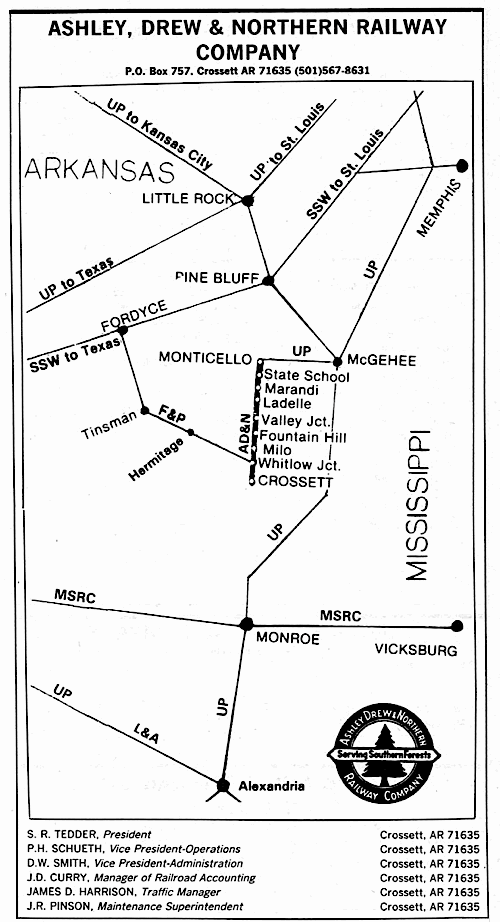
1988 Official Guide listing
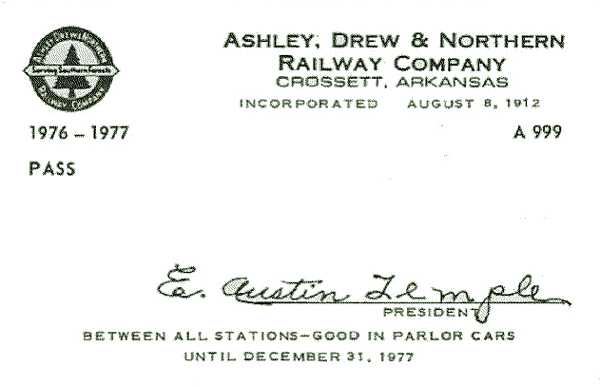
company pass / collection
Steam Motive Power
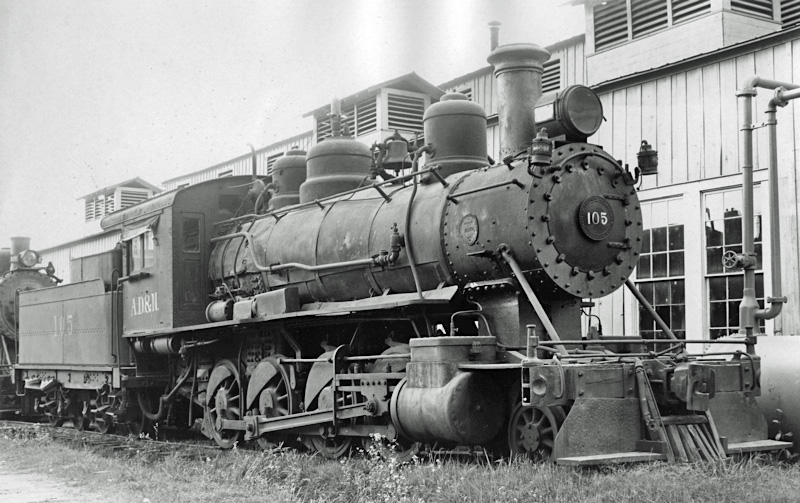
Ashley, Drew & Northern #105
Crossett, Ar / 1949 / collection


Ashley, Drew & Northern #105
to Fordyce Lumber Company
to Ashley, Drew & Northern #105
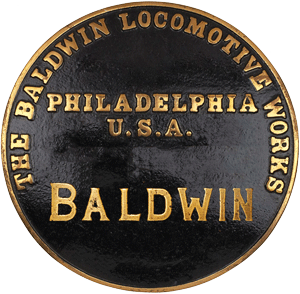

Ashley, Drew & Northern #115
Stanley collection


Ashley, Drew & Northern #115
to Missouri Pacific #531, 1911
to Ashley, Drew & Northern #531
renumbered #115
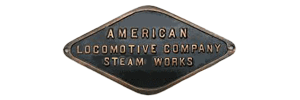
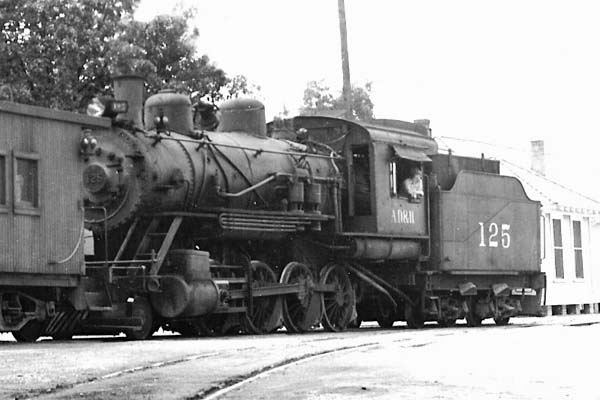
Ashley, Drew & Northern #125
Monticello, Ar / 1942 / Tedder collection


Ashley, Drew & Northern #125
to Missouri Pacific #514
to Ashley, Drew & Northern #125, 1930s

Diesel Motive Power

Ashley, Drew & Northern #170
Crossett, Ar / Sep 1959 / collection


Ashley, Drew & Northern #170
to American Agricultural Chem #8, 1965


collection
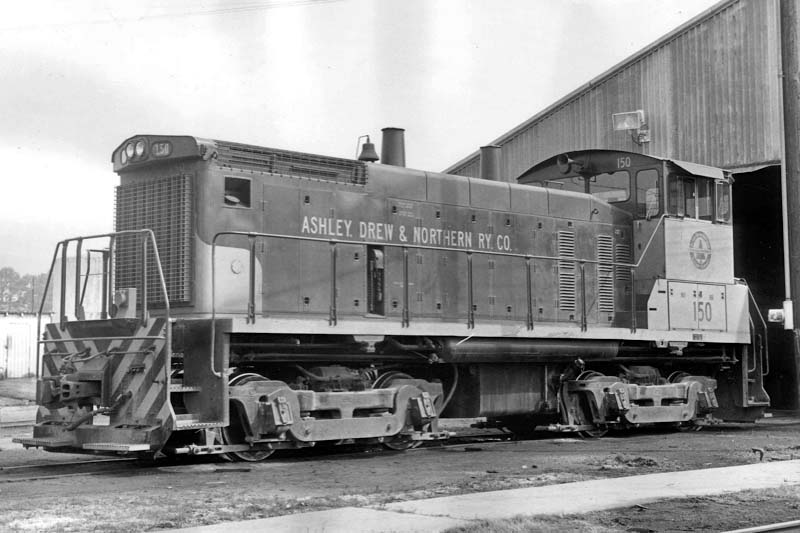
Ashley, Drew & Northern #150
Crossett, Ar / Jun 1971 / collection


Ashley, Drew & Northern #150
to Fordyce & Princeton #1503

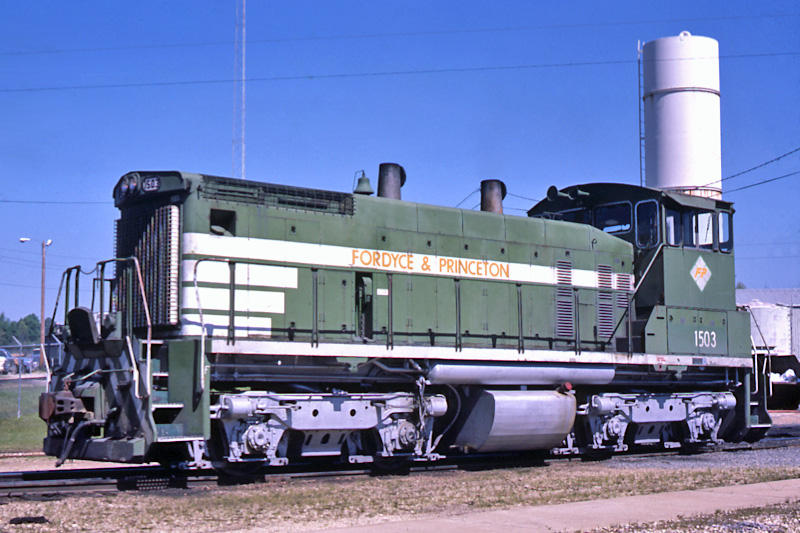
Crossett, Ar / Apr 1987 / collection
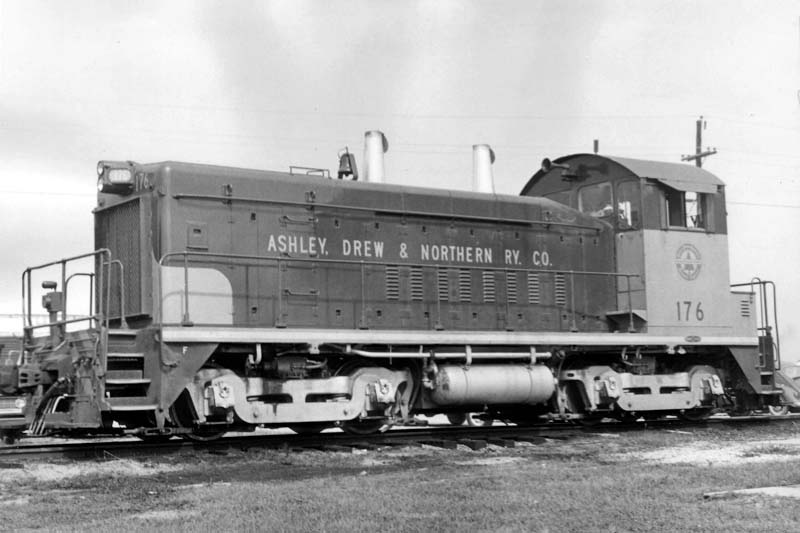
Ashley, Drew & Northern #176
Crossett, Ar / Jun 1971 / collection


Ashley, Drew & Northern #176
later renumbered ADN #1206
to Rail Switching Service #1206

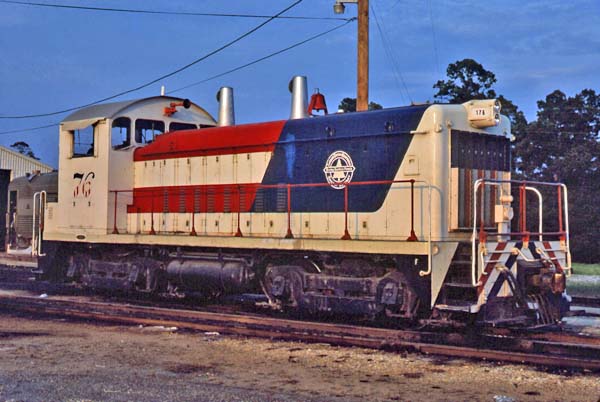
Crossett, Ar / Jul 1977 / collection
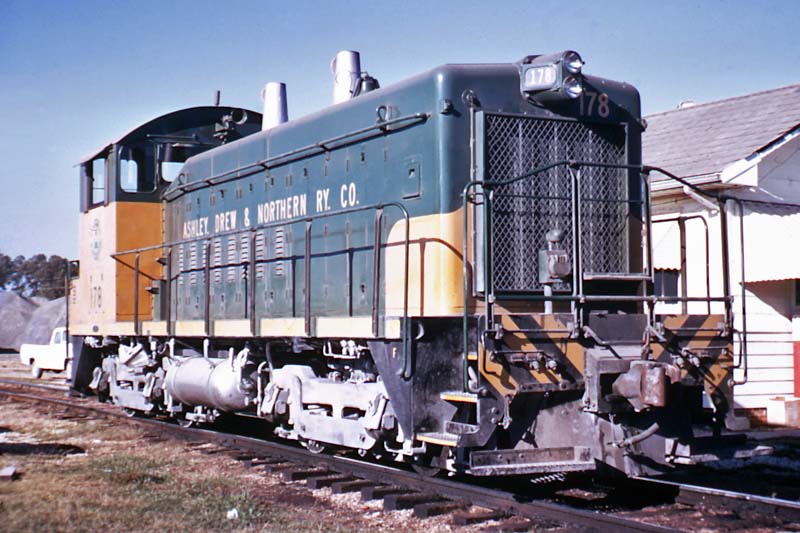
Ashley, Drew & Northern #178
Crossett, Ar / Sep 1973 / collection


Ashley, Drew & Northern #178
later renumbered #1208
to Georgia Pacific's Amador Central, 1995

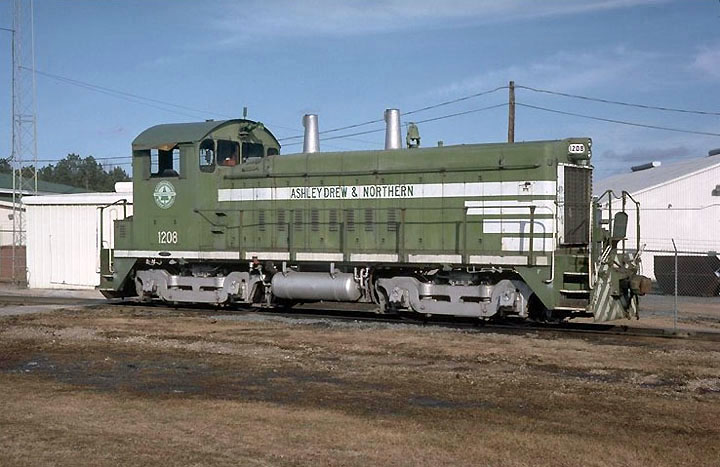
Crossett, Ar / unknown / web
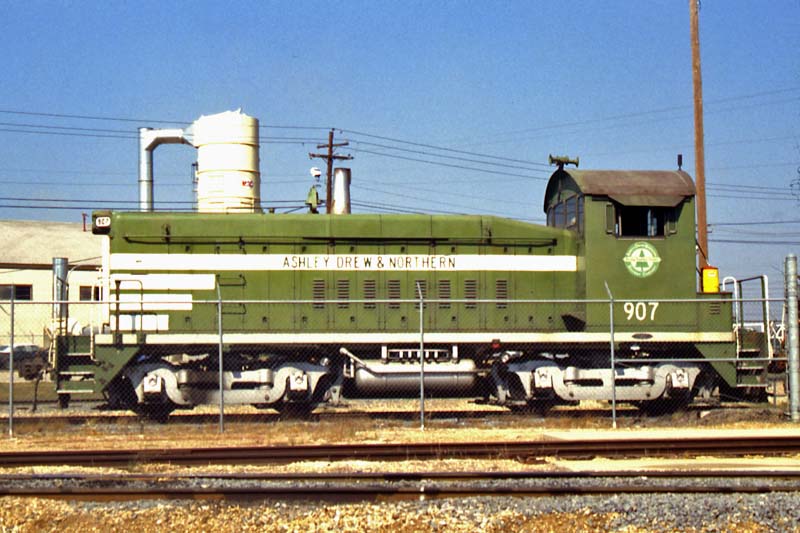
Ashley, Drew & Northern #907
Crossett, Ar / Oct 1987 / RWH


Ashley, Drew & Northern #907
to Feather River RR #102
to Ashley, Drew & Northern #102, 1965
later renumbered #907
to Gloster Southern #903
used on Columbia Route line

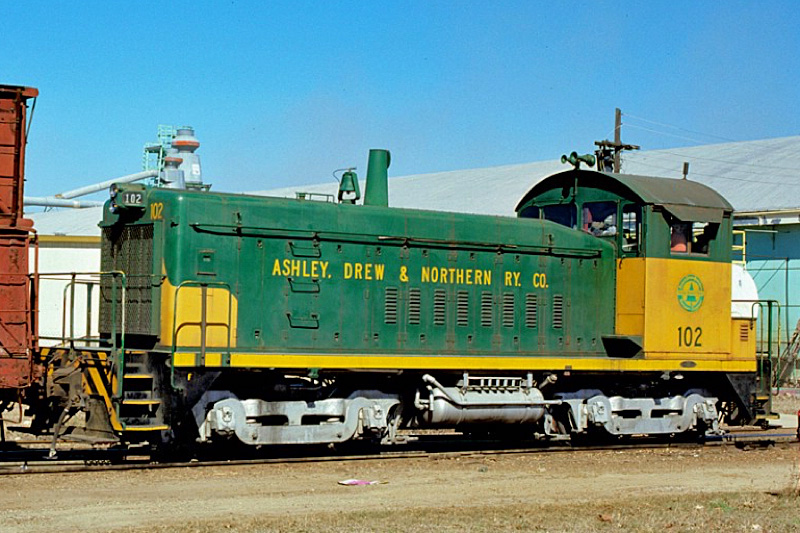
Crossett, Ar / Feb 1977 / Tedder collection
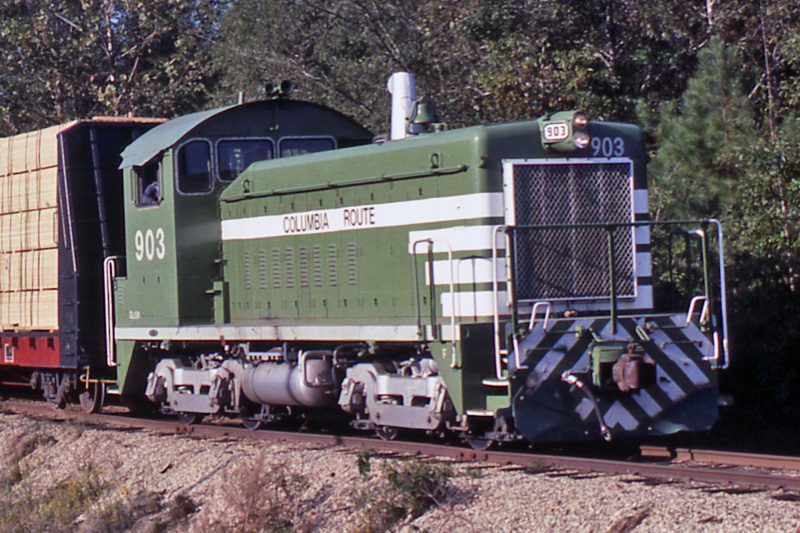
Silver Creek, Ms / Oct 1989 / Louis Saillard / collection

See also our Gloster Southern shortline scrapbook for more Columbia Route photos

Ashley, Drew & Northern #1514
Crossett, Ar / Apr 1987 / collection


Ashley, Drew & Northern #1514
to Ashley, Drew & Northern #1514, 1986
to Arkansas, Louisiana & Mississippi, 1996
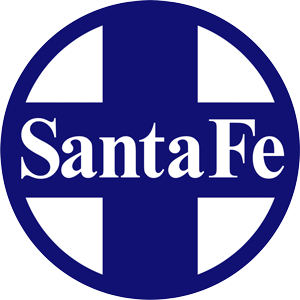

Crossett, Ar / Oct 1987 / RWH
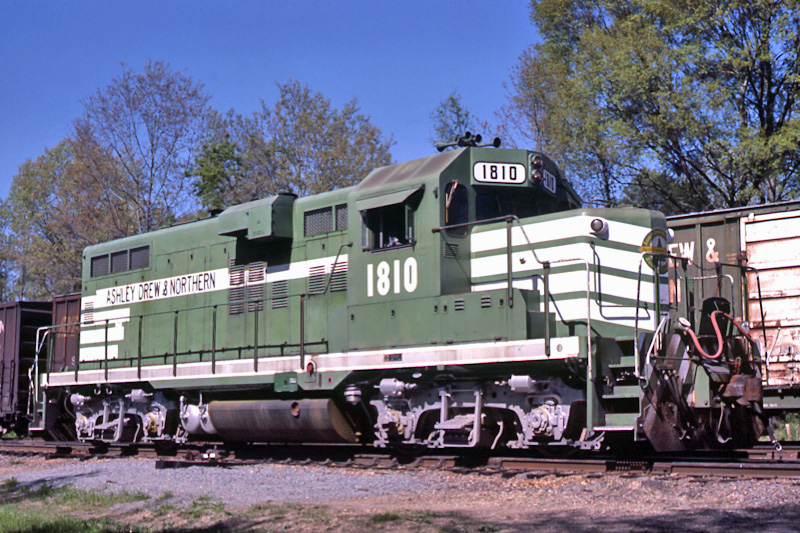
Ashley, Drew & Northern #1810
Fordyce, Ar / Apr 1987 / collection


Ashley, Drew & Northern #1810
rebuilt to GP10 by VMV, 1978
to Ashley, Drew & Northern #1810
to Chattahoochee Industrial #1810
to First Coast #1810


Crossett, Ar / Oct 1987 / RWH

Crossett, Ar / Oct 1987 / web
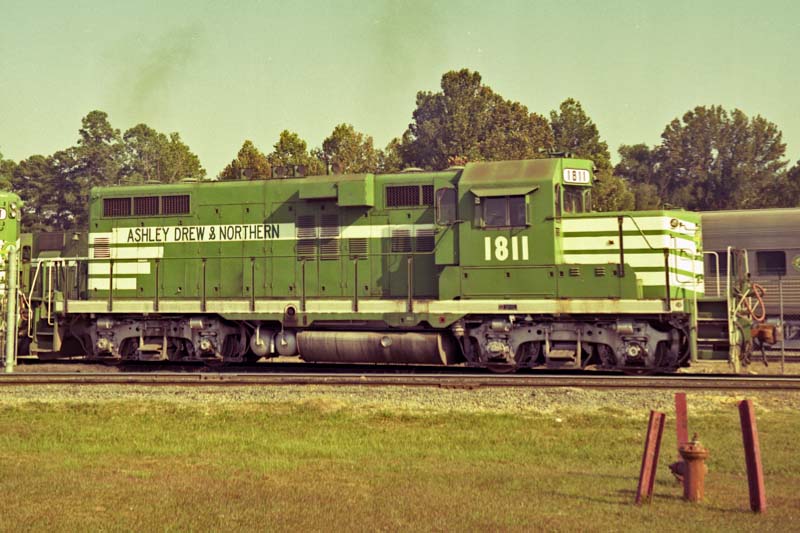
Ashley, Drew & Northern #1811
Crossett, Ar / Oct 1987 / JCH


Ashley, Drew & Northern #1811
rebuilt to GP10 by Paducah Shops, 1979
to Ashley, Drew & Northern #1811
to Chattahoochee Industrial #1811

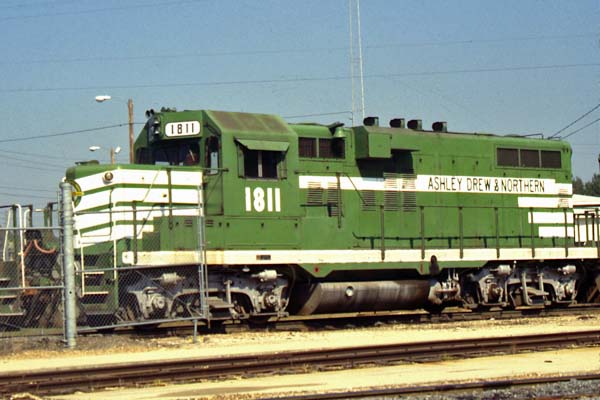
Crossett, Ar / Oct 1987 / RWH
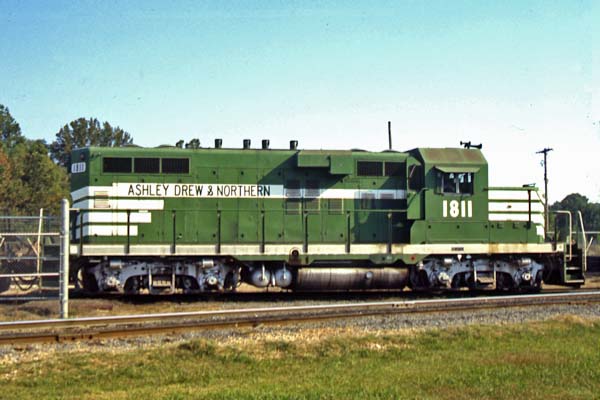
Crossett, Ar / Oct 1987 / RWH

Paducah Memories
One particular trip on the AD&N local was in 1980, following the shutdown of the Rock Island. Typically, Crossett traffic had been routed about 40 percent to the Missouri Pacific at Monticello, 40 percent to the Rock Island at Whitlow Junction, and 20 percent to the Arkansas & Louisiana Missouri, a 52 mile shortline that ran from Monroe, La., to Crossett. After the demise of the Rock Island, some 75 to 85 percent of the traffic was routed to the Missouri Pacific at Monticello. This resulted in AD&N trains of 75 to 90 or more cars each way. The two Paducah rebuilt GP10s, Nos. 1810 and 1811, remained the dominant motive power. On this particular trip, almost as soon as the local started leaving Monticello, one of the GP10s failed.
Noel Burchfield, a longtime skilled engineer on the AD&N’s roller coaster grades, was running the train that night. I thought to myself that he will never get this train of some 90 cars back to Crossett with only one unit running and towing one that was dead. However, I had underestimated the skill of Mr. Burchfield who nursed the train up and over the razorbacks and roller coaster grades by manipulating the throttle to avoid slipping, albeit at a very slow speed. The 41 mile southbound trip took over three hours. The sanders were empty when we pulled into Pond Pass Yard at Crossett. The steepest grades were on the northern end of the railroad. Once we left Ladelle and Valley Junction, although the lone engine took a while to get up to speed, it eventually was running from 25 to 30 miles per hour with the long train.
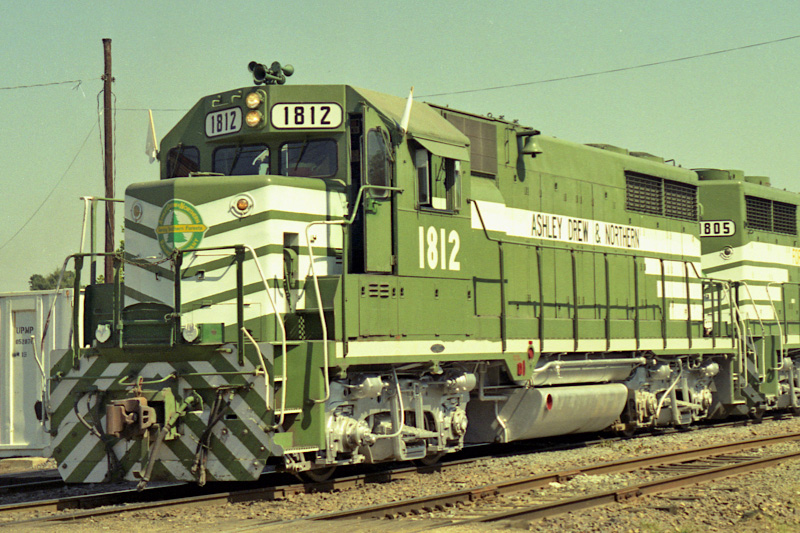
Ashley, Drew & Northern #1812
Monticello, Ar / Oct 1987 / JCH


Ashley, Drew & Northern #1812
to Ashley, Drew & Northern #1812, 1983
to Arkansas, Louisiana & Mississippi #1812


Fordyce, Ar / Oct 1987 / JCH
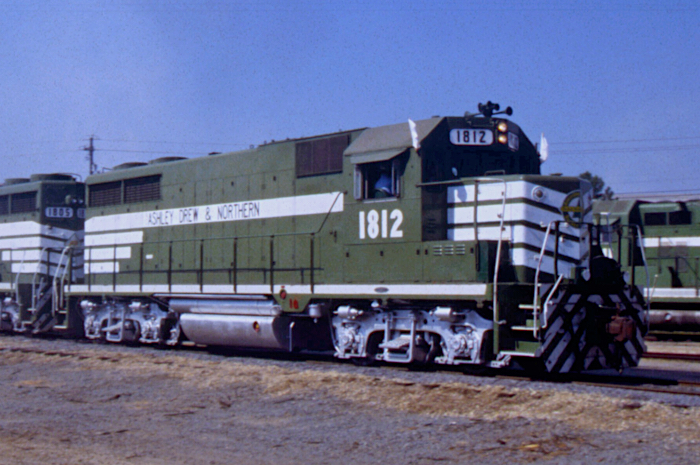
Crossett, Ar / Oct 1987 / JCH

Crossett, Ar / Oct 1987 / RWH
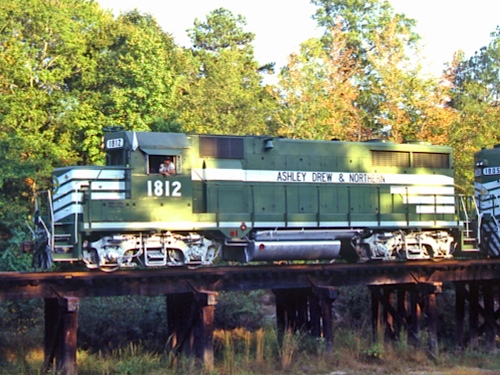
near Fordyce, Ar / Oct 1987 / RWH

near Fordyce, Ar / Oct 1987 / RWH
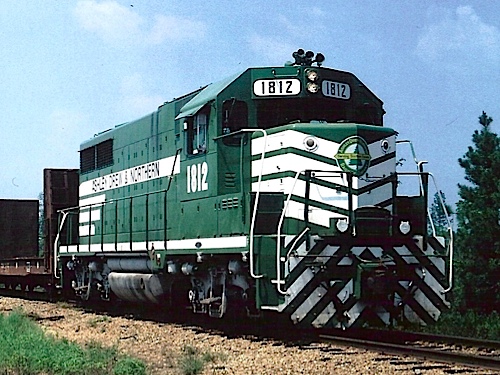
Whitlow Junction, Ar / Jun 1996 / Tedder collection

Fordyce, Ar / Aug 1984 / collection

Tedder Green
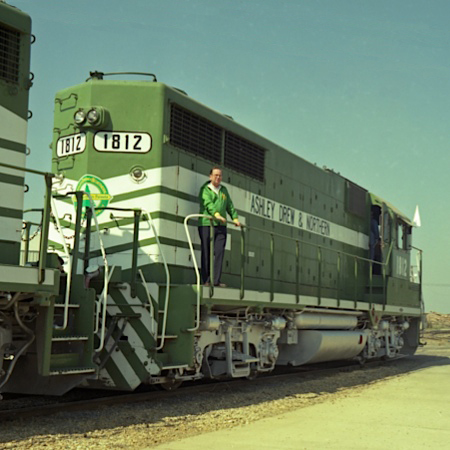 When I went to the AD&N in 1976, they were using five switchers, one SW900, three SW1200s and one SW1500. The SW1500 and one of the 1200s was used on the Monticello Local, the designation for the five day week roundtrip freight. The others were used on five of six switching jobs that operated around the clock serving the mills at Crossett. At this time, Georgia-Pacific had just opened a new tissue mill that added a lot of carloads to AD&N's traffic base. We were handling 70 outbound boxcar loads of product per day, besides an equal number of inbound empty boxcars--plus all the raw materials, chemicals and pulpwood, used in the paper making process. All told, line haul and switching, we were handling in excess of 50,000 carloads per year in the late 1970s.
When I went to the AD&N in 1976, they were using five switchers, one SW900, three SW1200s and one SW1500. The SW1500 and one of the 1200s was used on the Monticello Local, the designation for the five day week roundtrip freight. The others were used on five of six switching jobs that operated around the clock serving the mills at Crossett. At this time, Georgia-Pacific had just opened a new tissue mill that added a lot of carloads to AD&N's traffic base. We were handling 70 outbound boxcar loads of product per day, besides an equal number of inbound empty boxcars--plus all the raw materials, chemicals and pulpwood, used in the paper making process. All told, line haul and switching, we were handling in excess of 50,000 carloads per year in the late 1970s.
I decided that we needed another engine or two, and road engines at that. Thus, a decision was made to go with a Paducah (ICG) rebuild of a GP9 which Paducah designated as GP10s. Thus the 1810 was born. One of the many decisions I had to make was to pick a paint scheme. I pored over all the back issues of Extra 2200 South, looking at various paint schemes on Geeps. I finally settled on the GM&O as the basis for the new AD&N paint scheme, with a little influence from the RF&P which was somewhat similar. Working with Paducah's engineers, we came up with the green and white scheme that is now familiar on AD&N and affiliated roads' loocmotives. This scheme carried over to the GP28s which were bought in 1986, including one ex-KO&G (MP) unit and one former Mississippi Central unit that was then owned by ICG. Besides the GP10s and GP28s, we repainted all of the switchers in the same color scheme.
Tedder Numbering
Concurrently with the new painting, I also implemented a new numbering system, posthumously applied to the three GE 70-tonners and one GE 95-tonner that were the AD&N's first diesels. The number scheme combined the first two digits of the horsepower with the last two digits in numerical sequence of the various acquisitions. Thus, the 70-tonners were 601, 602, and 603. The 95-tonner was 604. The EMD switchers began with 1205, 1206, 907 and 1208, followed by 1509 for the SW1500. Starting with GP10 1810, the remainder of the units fell into their respective places, GP10 1811, GP28 1812, CF7s 1513 and 1514, followed by the last GP28s, 1815 and 1816.
Russell Tedder, 2011
photo above at Crossett, Ar / Oct 1987 / JCH
Rolling Stock

At one time, the Ashley, Drew & Northern had over 2000 freight cars in it's inventory. A very large amount for a little 40 mile railroad. AD&N's popular green & white 50' box car, and other cars, can still be seen roaming the rails today. For now, those cars can still provide a small reminder of an interesting little short line that ran in the woods of Arkansas called the Ashley, Drew & Northern.
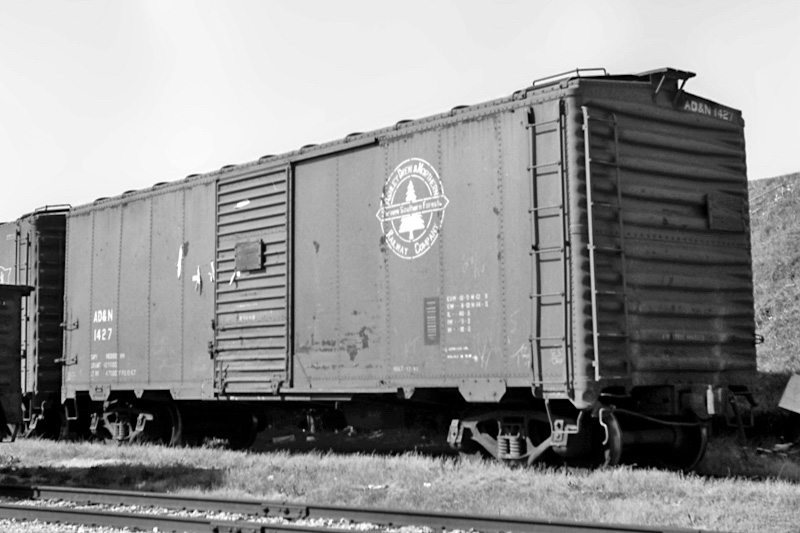
Ashley, Drew & Northern #1427
boxcar / Huntsville, Al / Apr 1972 / JCH
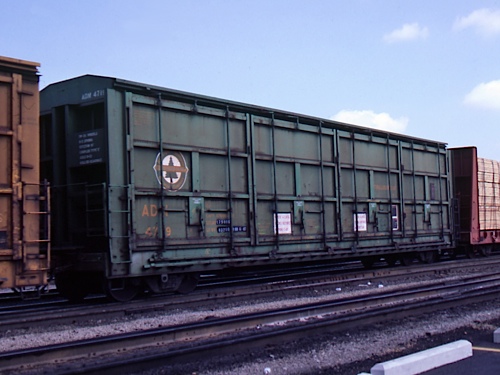
Ashley, Drew & Northern #4719
all-door boxcar / Jackson, Ms / Jul 1987 / RWH
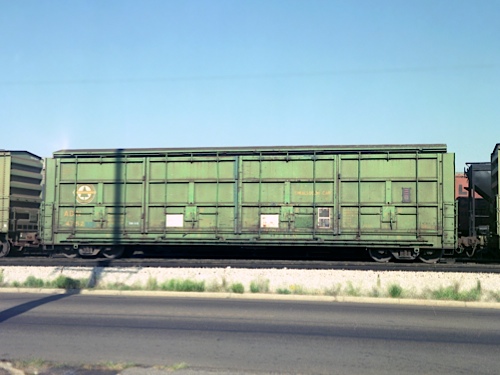
Ashley, Drew & Northern #4752
all-door boxcar / Jackson, Ms / Aug 1986 / JCH

Ashley, Drew & Northern #4905
all-door boxcar / Jackson, Ms / Jul 1987 / RWH
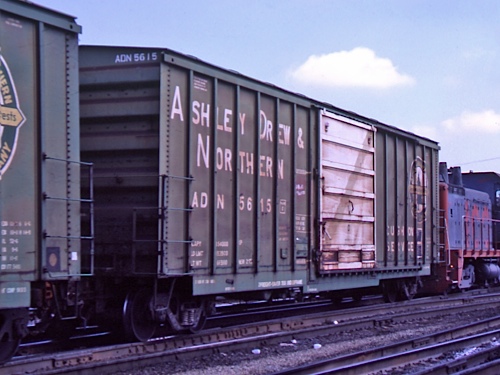
Ashley, Drew & Northern #5615
boxcar / Jackson, Ms / Jul 1987 / RWH
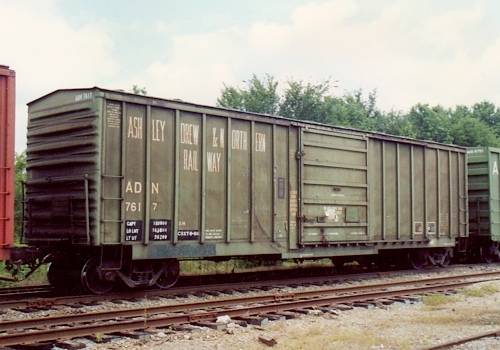
Ashley, Drew & Northern #7617
boxcar / Monroe, La / July 1989 / RWH
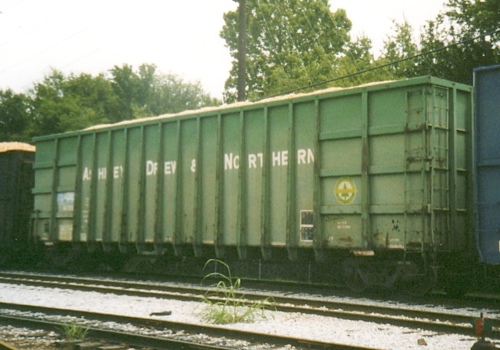
wood chip hopper / Columbus, Ms / 2000 / JCH
Locations
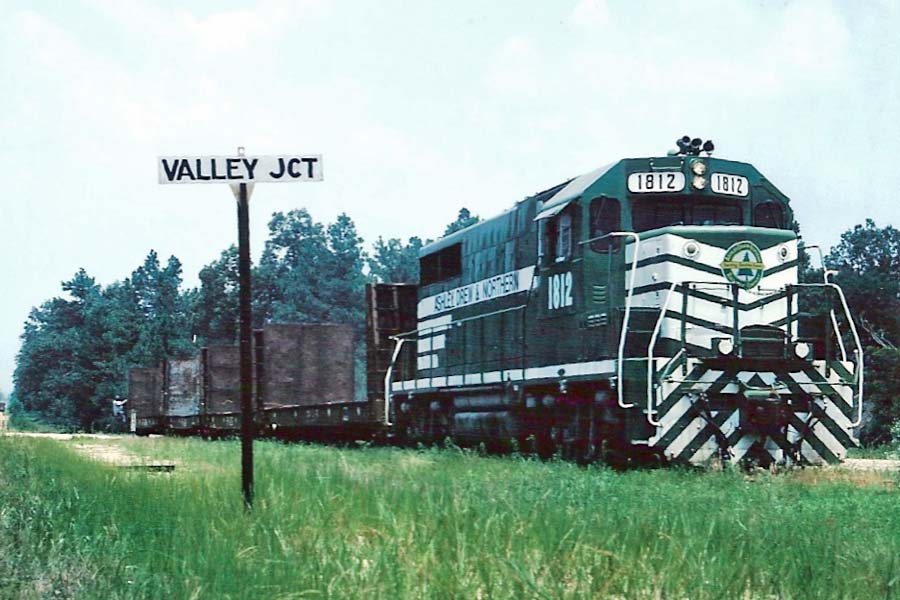
Valley Junction, Ar / Jun 1996 / Tedder collection

In this June 30, 1996 scene (above), AD&N GP28 #1812 is picking up a cut of empty woodracks at Valley Junction, Arkansas, as the road clears all cars of the line on its last day of operation. Valley Junction was AD&N’s crossing with the Wilmar & Saline Valley Railroad, a sister logging railroad during the early days of the AD&N. On the same day, same run, #1812 stops at Whitlow Junction, Arkansas (above, right) former crossing and interchange junction with the Rock Island, to pick up the last here.
Russell Tedder

Whitlow Junction, Ar / Jun 1996 / Tedder collection
Paper Mills

Each 24-hour operating cycle on the AD&N typically saw six regular switch engine assignments, three on the day shift, two on the evening shift, and one on the graveyard shift. The first switcher on the day shift was named the “paper route,” which gathered up empty boxcars for the three major paper mills to replace loaded cars pulled as the engine and crew made their appointed rounds. Extra switching shifts were called in peak periods.
The track layout at Crossett consisted of an outer loop around the entire complex. On the east side, the mainline was part of the loop which connected to the eight-track Pond Pass yard. On the west side, where the track curved east to complete the loop in that area, the main track continued straight south as the Venice Line. The Venice line was a Crossett Lumber Company line that extended to Venice, Louisiana, on the Missouri Pacific over which the lumber company ran log trains to its logging camps between El Dorado, Arkansas and Bastrop, Louisiana. After cessation of railroad logging in the early 1950s, the line was cut back to the industrial area on the south side of Crossett although the remaining line was still called the Venice line. Besides a Georgia-Pacific plant, two other industrial plants were served in this industrial area. Including line haul shipments between Crossett, Whitlow Junction and Monticello, interplant and intraplant switching cars, the AD&N handled an average of 50,000 carloads of freight per year.
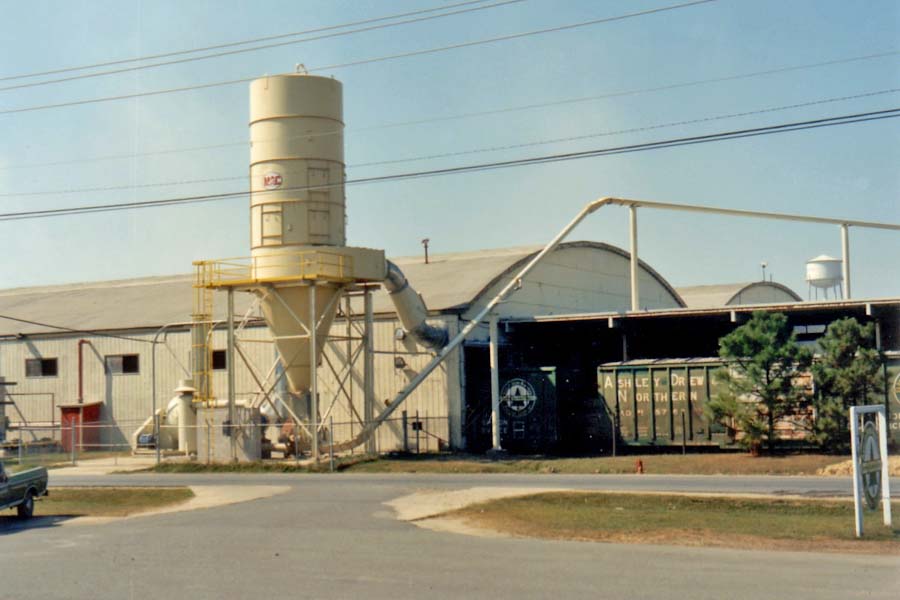
Crossett, Ar / Oct 1987 / JCH

Click to see the Crossett mill complex plotted on a Google Maps page
Locomotive Shops
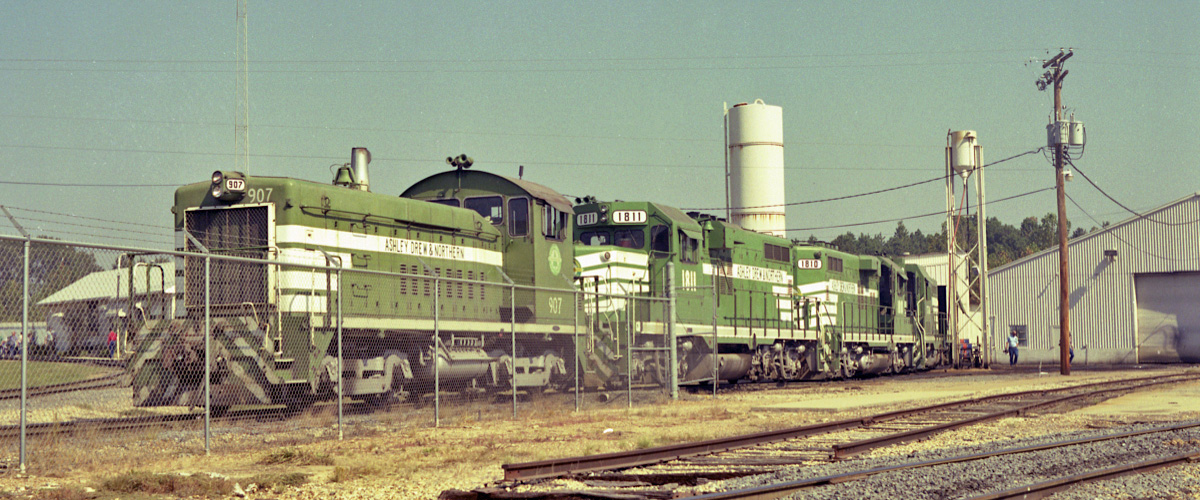
shop service area / Crossett, Ar / Oct 1987 / JCH
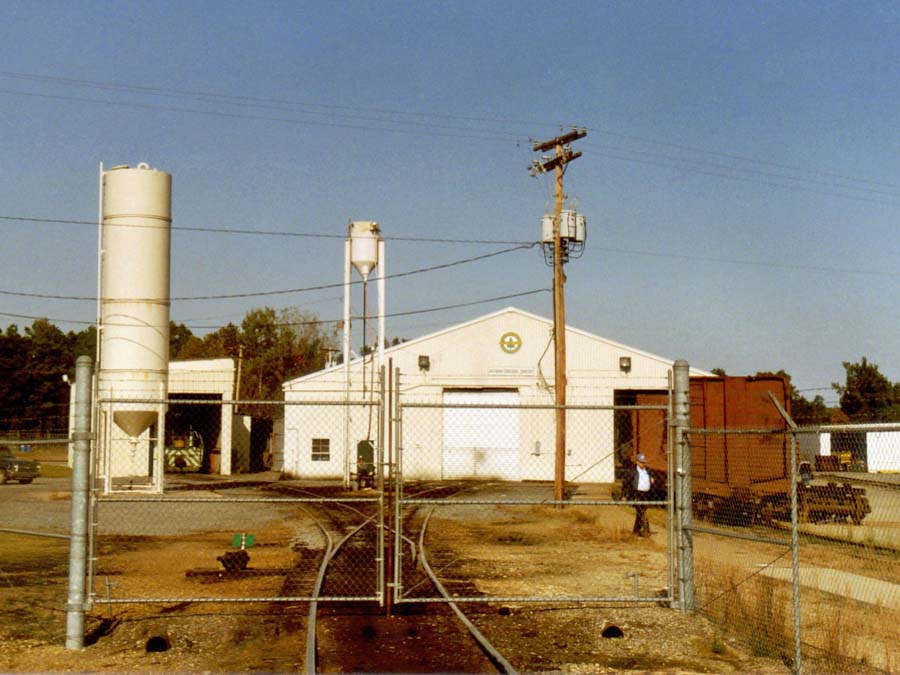
Crossett, Ar / Oct 1987 / JC
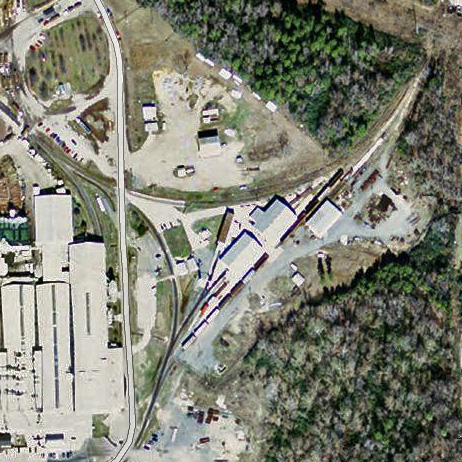
Google Maps

Click to see the AD&N locomotive service area plotted on a Google Maps page
Lagniappe
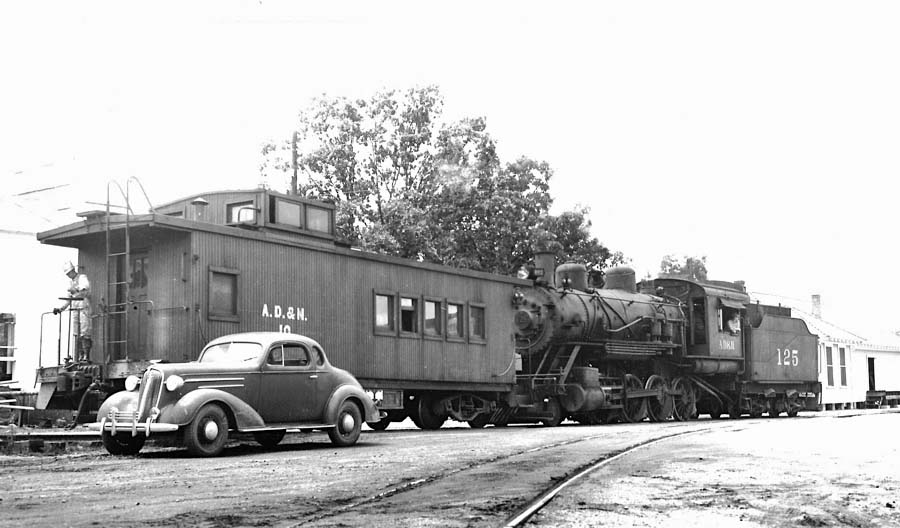
Ground Transportation
Monticello, Ar / 1942 / Tedder collection

All Business
Longview, Ar / 1960 / Tedder collection
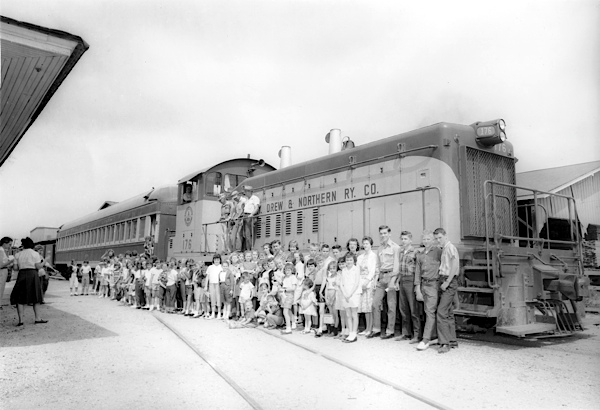
Girl Scout Special
Apr 1961 / collection
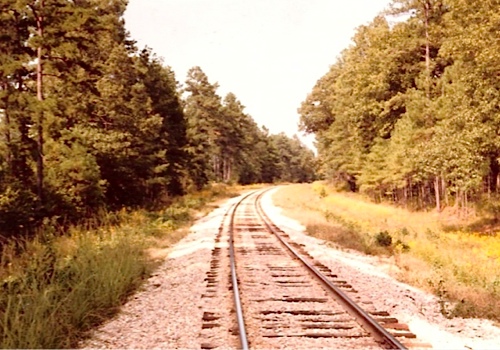
AD&N right of way / Milo, Ar / Tedder
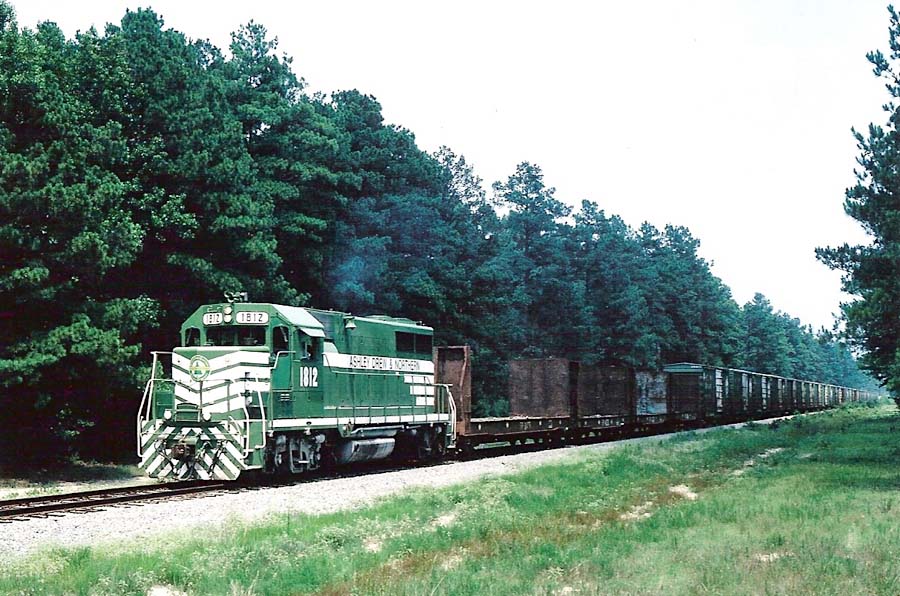
Final Run Southbound
near Longview crossing / Jun 1996 / Tedder collection
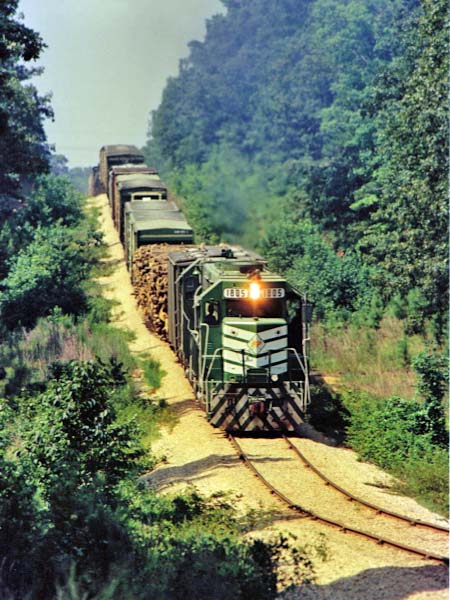
Southbound Roller Coaster
south of Monticello, Ar / 1985 / Tedder collection

Cresting
Paradise, Ar / 1985 / Tedder collection
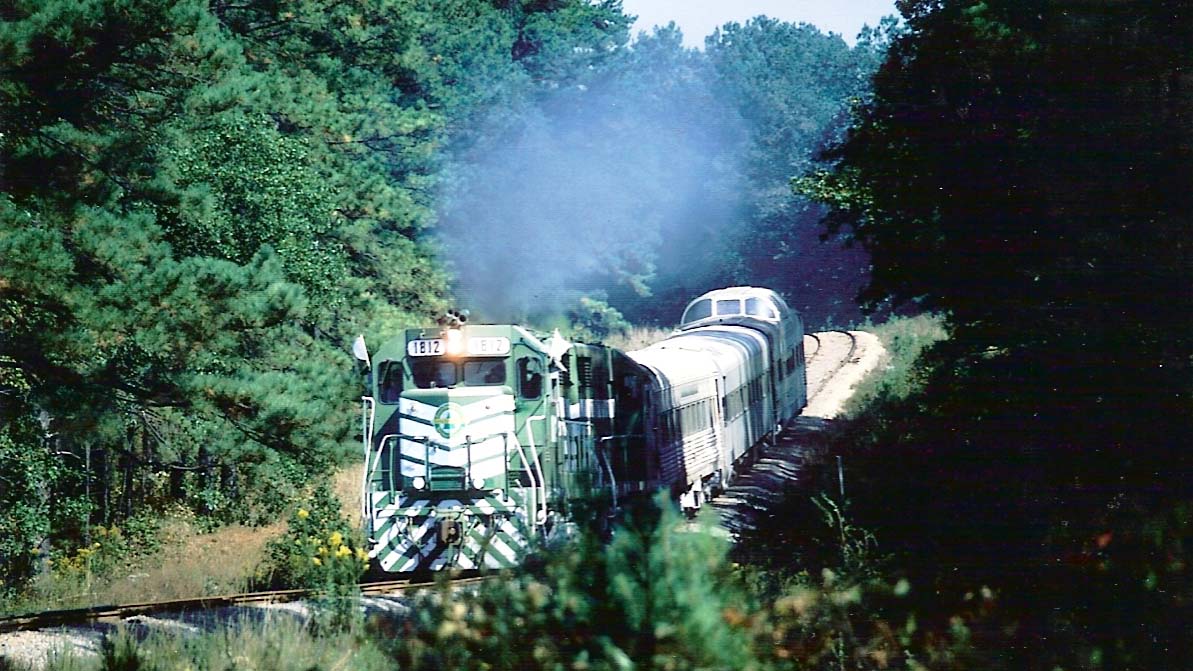
Off to the Races
Roark, Ar / 1986 / Tedder collection
Collections
Links / Sources
- Genesee & Wyoming railroad operator -- current owner of Crossett rail operations
- Wikipedia article for Ashley, Drew & Northern
- The Ashley, Drew & Northern Railfan Site
- Tedder Green: Evolution of the Ashley Drew & Northern’s Paint Scheme by Russell Tedder
- Edward A. Lewis, American Shortline Railway Guide - Third Edition (Kalmbach, 1986) 23
- Steam locomotive roster data courtesy of Allen Stanley at Railroad Data Exchange
